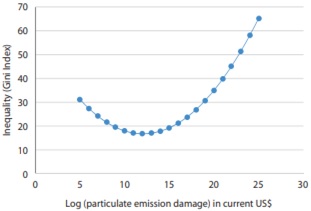Bridging the Gap: Exploring the Interconnectedness of Income Inequality and Environmental Degradation in Sustainable Development
Keywords:
Income Inequality, Environmental Degradation, Sustainable Development, Interconnectedness, Ecological Impact.Abstract
This paper explores the intricate relationship between income inequality and environmental degradation, emphasizing how socioeconomic disparities contribute to environmental harm and exacerbate existing inequalities. Since the Brundtland Report's publication in 1987, social inequality has transitioned from a peripheral issue to a central concern in global development discussions. The United Nations (UN) has integrated this concern into its frameworks, such as the introduction of the inequality-adjusted Human Development Index (HDI) and the inclusion of inequality reduction as a key objective in the Sustainable Development Goals (SDGs). Despite these efforts, the complex linkages between social inequality and environmental sustainability remain insufficiently understood. The research presented in this paper builds on the concept of the Environmental Kuznets Curve (EKC), which suggests that environmental degradation initially rises with economic growth but declines as income increases. However, this hypothesis has been criticized for overlooking the mechanisms by which social inequalities impact sustainability. Focusing on regions like Latin America, where income inequality is pronounced, this study investigates how disparities in wealth and power influence environmental outcomes. The analysis incorporates key concepts such as "multidimensional interdependent inequalities" and "sustainable development" to explore how social inequalities weaken democratic institutions, limit access to collective goods, and reduce state capacity, thereby hindering sustainable development. Employing a comprehensive methodology that combines quantitative data analysis, regression modeling, and a review of existing literature, this study reveals that higher income inequality is associated with greater environmental degradation. The findings highlight that inequality not only contributes to environmental harm but also deepens the adverse impacts on poorer and more vulnerable populations, creating a vicious cycle where environmental degradation worsens socioeconomic disparities. Furthermore, the study examines the interplay between economic and political power, arguing that the concentration of wealth and power often leads to unsustainable environmental practices. In conclusion, the paper underscores the need for targeted policies and interventions that address both environmental and social inequalities. By promoting more equitable resource management and reducing environmental harm, it is possible to mitigate the inequities resulting from environmental degradation and foster sustainable development. This research contributes to the ongoing discourse on social inequality and sustainability, offering insights into the causal mechanisms that link these critical issues and providing policy implications for addressing them effectively.








